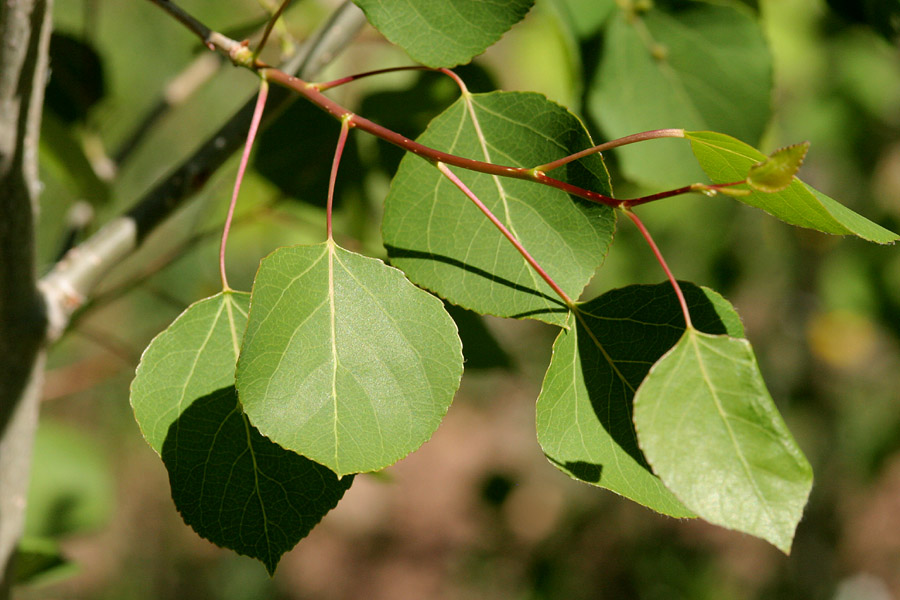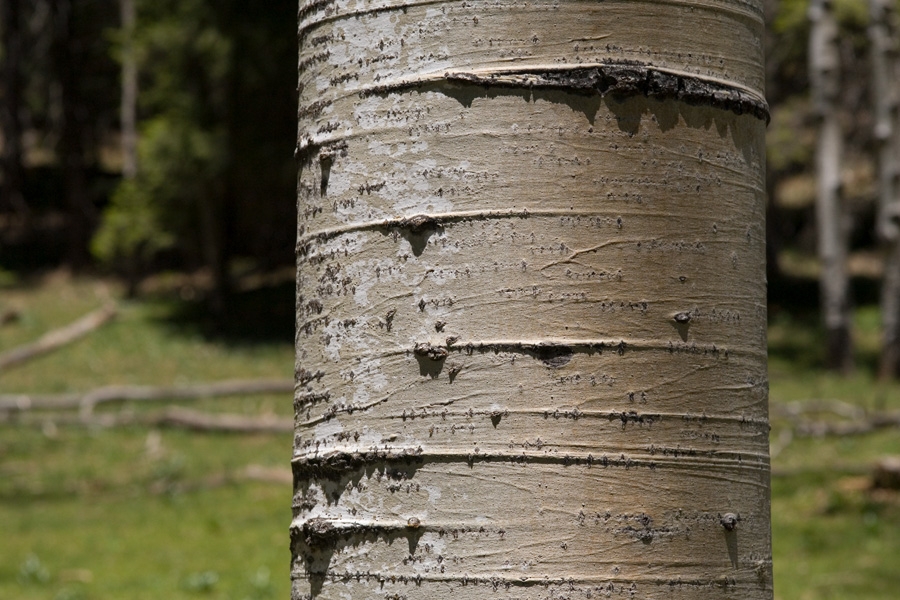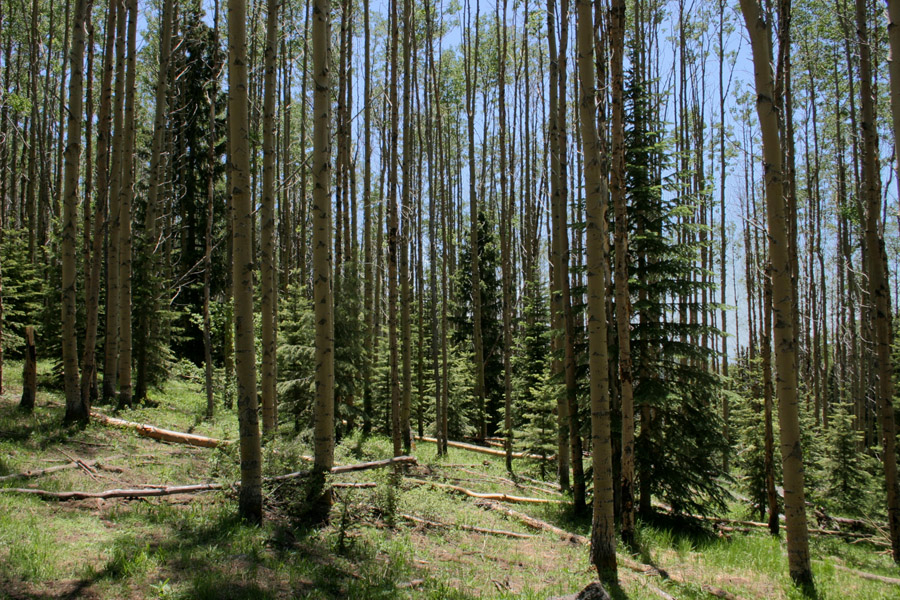Selected Plants of Navajo Rangelands
Quaking aspen

Quaking aspen is an attractive deciduous tree, growing up to 40 feet tall. The trunk is generally long and slender, but can be up to nearly three feet in diameter. The leaves change from green to bright yellow or yellowish-orange in the fall. Quaking aspen grows on moist uplands, dry mountainsides, high plateaus, mesas, avalanche chutes, talus, parklands, gentle slopes near valley bottoms, alluvial terraces, and along watercourses. It is most common at elevations between 6,000 and 10,000 feet. Aspens seldom reproduce from seed. Most reproduction of aspen is by basal sprouting or root sprouting, many trees in a grove being connected together by a common root system in what are referred to as "clones." Quaking aspen grows on a range of soils: shallow, rocky soil; deep, loamy sands; and heavy clays. Aspen is good to excellent forage for sheep, and fair for cattle. The twigs, bark, and buds are browsed by wildlife, and birds eat the seeds. Grazing sprouts, especially by cattle and elk, is a growing concern in the maintenance of aspen stands.
Wild and domestic ungulates use quaking aspen for summer shade. Seral quaking aspen communities provide excellent hiding cover for moose, elk, and deer. Deer use quaking aspen stands for fawning grounds. Well-stocked quaking aspen stands provide excellent watershed protection. Aspen bark contains salicin (similar to the active ingredient in aspirin) and traditionally was used internally as an expectorant and externally as a counterirritant.
*Description courtesy of Utah State University's Range Plants of Utah.








©2018 NMSU Board of Regents.
Individual photographers retain all rights to their images.
Partially funded by the
Western Sustainable
Agriculture Research and Education Program
(westernsare.org; 435.797.2257),
project EW15-023.
Programs and projects supported by Western SARE are
equally open to all people.